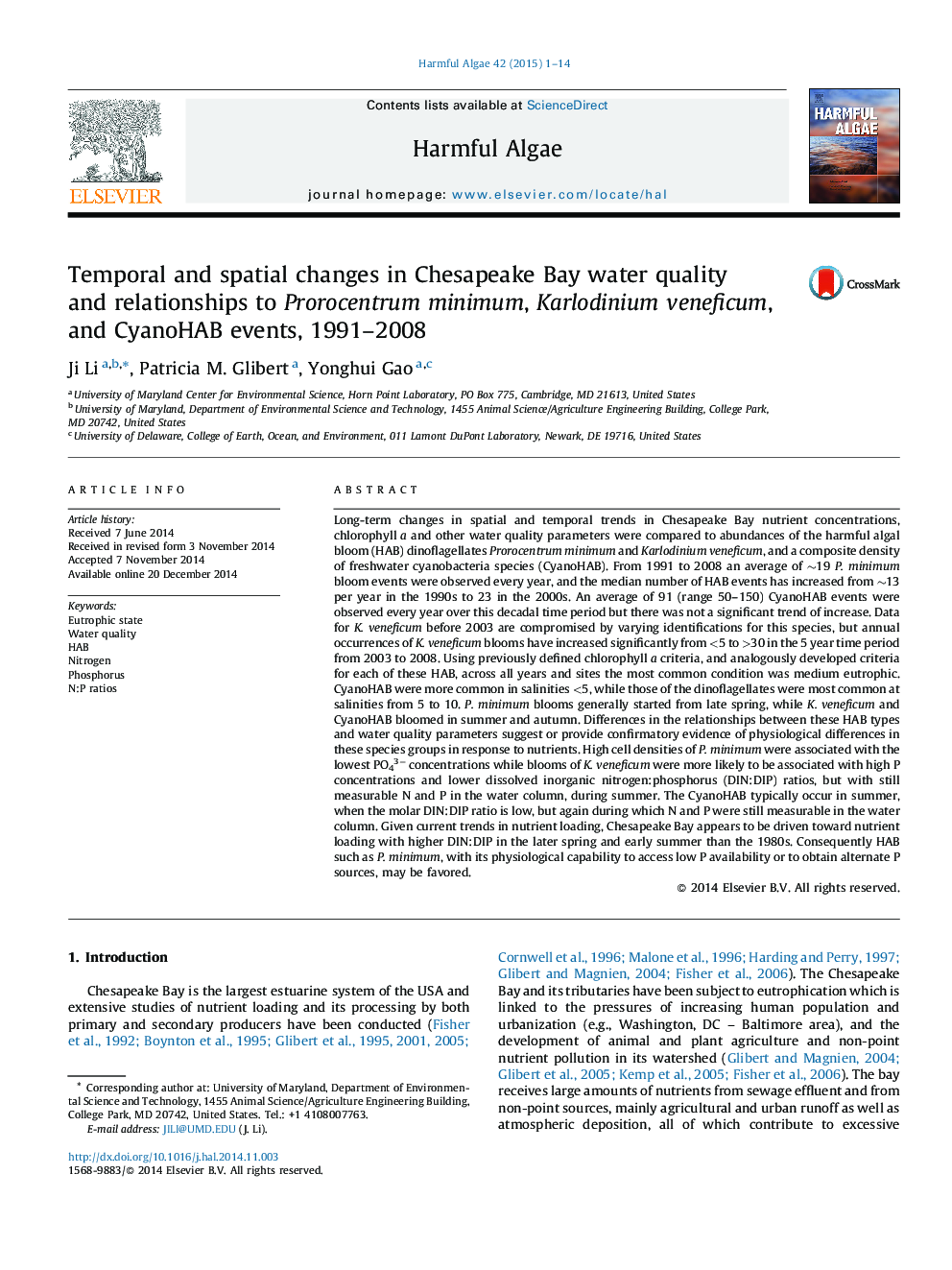| کد مقاله | کد نشریه | سال انتشار | مقاله انگلیسی | نسخه تمام متن |
|---|---|---|---|---|
| 4545202 | 1626929 | 2015 | 14 صفحه PDF | دانلود رایگان |

• Trends in HAB and nutrients, chlorophyll a, and other abiotic parameters in Chesapeake Bay were compared.
• Bloom criteria were applied for three types of blooms and for chlorophyll a.
• Bloom frequency and chlorophyll a were generally categorized as mesotrophic.
• Prorocentrum minimum and Karlodinium veneficum typically occurred under differing nutrient conditions.
• Blooms of dinoflagellates and CyanoHAB were typically spatially distinct.
Long-term changes in spatial and temporal trends in Chesapeake Bay nutrient concentrations, chlorophyll a and other water quality parameters were compared to abundances of the harmful algal bloom (HAB) dinoflagellates Prorocentrum minimum and Karlodinium veneficum, and a composite density of freshwater cyanobacteria species (CyanoHAB). From 1991 to 2008 an average of ∼19 P. minimum bloom events were observed every year, and the median number of HAB events has increased from ∼13 per year in the 1990s to 23 in the 2000s. An average of 91 (range 50–150) CyanoHAB events were observed every year over this decadal time period but there was not a significant trend of increase. Data for K. veneficum before 2003 are compromised by varying identifications for this species, but annual occurrences of K. veneficum blooms have increased significantly from <5 to >30 in the 5 year time period from 2003 to 2008. Using previously defined chlorophyll a criteria, and analogously developed criteria for each of these HAB, across all years and sites the most common condition was medium eutrophic. CyanoHAB were more common in salinities <5, while those of the dinoflagellates were most common at salinities from 5 to 10. P. minimum blooms generally started from late spring, while K. veneficum and CyanoHAB bloomed in summer and autumn. Differences in the relationships between these HAB types and water quality parameters suggest or provide confirmatory evidence of physiological differences in these species groups in response to nutrients. High cell densities of P. minimum were associated with the lowest PO43− concentrations while blooms of K. veneficum were more likely to be associated with high P concentrations and lower dissolved inorganic nitrogen:phosphorus (DIN:DIP) ratios, but with still measurable N and P in the water column, during summer. The CyanoHAB typically occur in summer, when the molar DIN:DIP ratio is low, but again during which N and P were still measurable in the water column. Given current trends in nutrient loading, Chesapeake Bay appears to be driven toward nutrient loading with higher DIN:DIP in the later spring and early summer than the 1980s. Consequently HAB such as P. minimum, with its physiological capability to access low P availability or to obtain alternate P sources, may be favored.
Journal: Harmful Algae - Volume 42, February 2015, Pages 1–14